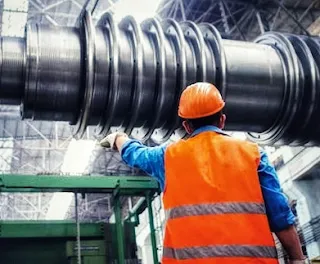India's Economic Resilience: A Global Opportunity Amid Japan, UK Recession
Introduction:
In the tumultuous landscape of global economics, India emerges as a beacon of resilience and opportunity amidst the recent recessions in major economies like Japan and the UK. Despite the pervasive impact of the Covid-19 pandemic, India's economy continues to defy expectations, exhibiting remarkable growth prospects and attracting attention from investors worldwide. This comprehensive analysis delves into India's economic trajectory, its comparative resilience amid global recessions, and the unprecedented opportunities it presents for investors and businesses alike.
India's Economic Resilience:
India's economic resilience in the face of global adversity is underscored by its status as the fastest-growing large economy. According to the World Economic Situation and Prospects 2024 report, India's projected growth rate stands at an impressive 6.2% in 2024. This trajectory is fueled by a combination of factors, including a burgeoning digital economy, favorable demographics, and proactive government policies aimed at stimulating investment and fostering entrepreneurship.
Statistical Insights:
- India's GDP growth rate outpaces global averages, reflecting its robust economic fundamentals.
- The digital economy contributes significantly to India's GDP, with sectors like e-commerce, digital payments, and IT services experiencing exponential growth.
- Government initiatives such as Make in India, Digital India, and Startup India bolster investor confidence and drive domestic innovation.
Implications of Global Recessions:
The recent recessions in Japan and the UK highlight the pervasive economic challenges wrought by the Covid-19 pandemic. Japan, once poised to become the world's largest economy, has slipped to the fourth position below Germany, grappling with prolonged economic stagnation. Similarly, the UK's contraction in GDP signals a daunting road ahead for Prime Minister Rishi Sunak and his Conservative party, amid political uncertainty and the looming specter of a general election.
Statistical Insights:
- Japan's GDP contraction and the UK's entry into recession underscore the severity of the economic downturns, with ripple effects felt across global markets.
- Germany's export-dependent manufacturing sector faces headwinds from geopolitical events like Russia's invasion of Ukraine, exacerbating economic challenges.
India: A Global Opportunity:
Against this backdrop of economic turmoil, India emerges as a prime investment destination, poised to overtake both Japan and Germany in economic output by 2026 and 2027, respectively. As the world's fifth-largest economy, India boasts a GDP of approximately $3.7 trillion, with a growth rate exceeding 7%. Multinational corporations increasingly view India as a strategic manufacturing base, aligning with global supply chain diversification strategies and capitalizing on its skilled labor force and expanding consumer market.
Statistical Insights:
- Projections from the International Monetary Fund affirm India's trajectory towards economic prominence, fueled by sustained GDP growth and strategic policy interventions.
- Foreign direct investment (FDI) inflows into India surge, signaling investor confidence in the country's long-term growth prospects.
Seizing the Moment:
As the gap between developed and emerging economies narrows, India stands at the precipice of a transformative moment in global economics. By leveraging its strengths in key sectors such as technology, manufacturing, and renewable energy, India can assert its influence on the global stage and contribute substantially to driving global growth. Moreover, fostering a conducive business environment, enhancing infrastructure, and prioritizing innovation will be imperative in sustaining India's economic momentum and solidifying its position as a preeminent global economic powerhouse.
Conclusion:
In conclusion, amidst the prevailing uncertainties of the global economic landscape, India emerges as a beacon of resilience and opportunity. With robust growth prospects, favorable demographics, and strategic policy interventions, India offers unparalleled potential for investors seeking stability and returns. As stakeholders navigate the complexities of the post-pandemic world, recognizing and capitalizing on India's economic prowess will be instrumental in shaping a prosperous and sustainable future for the global economy.

Comments